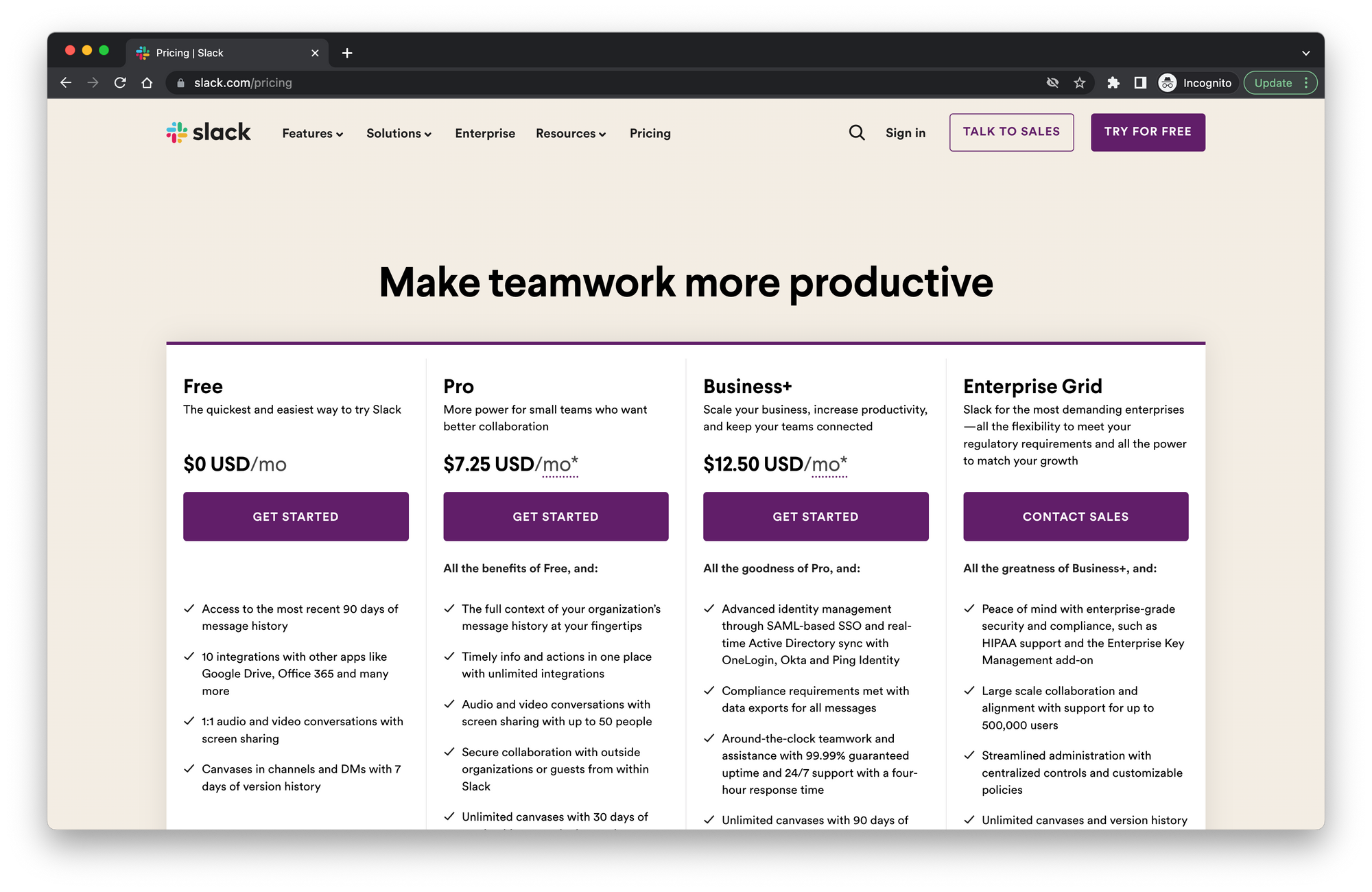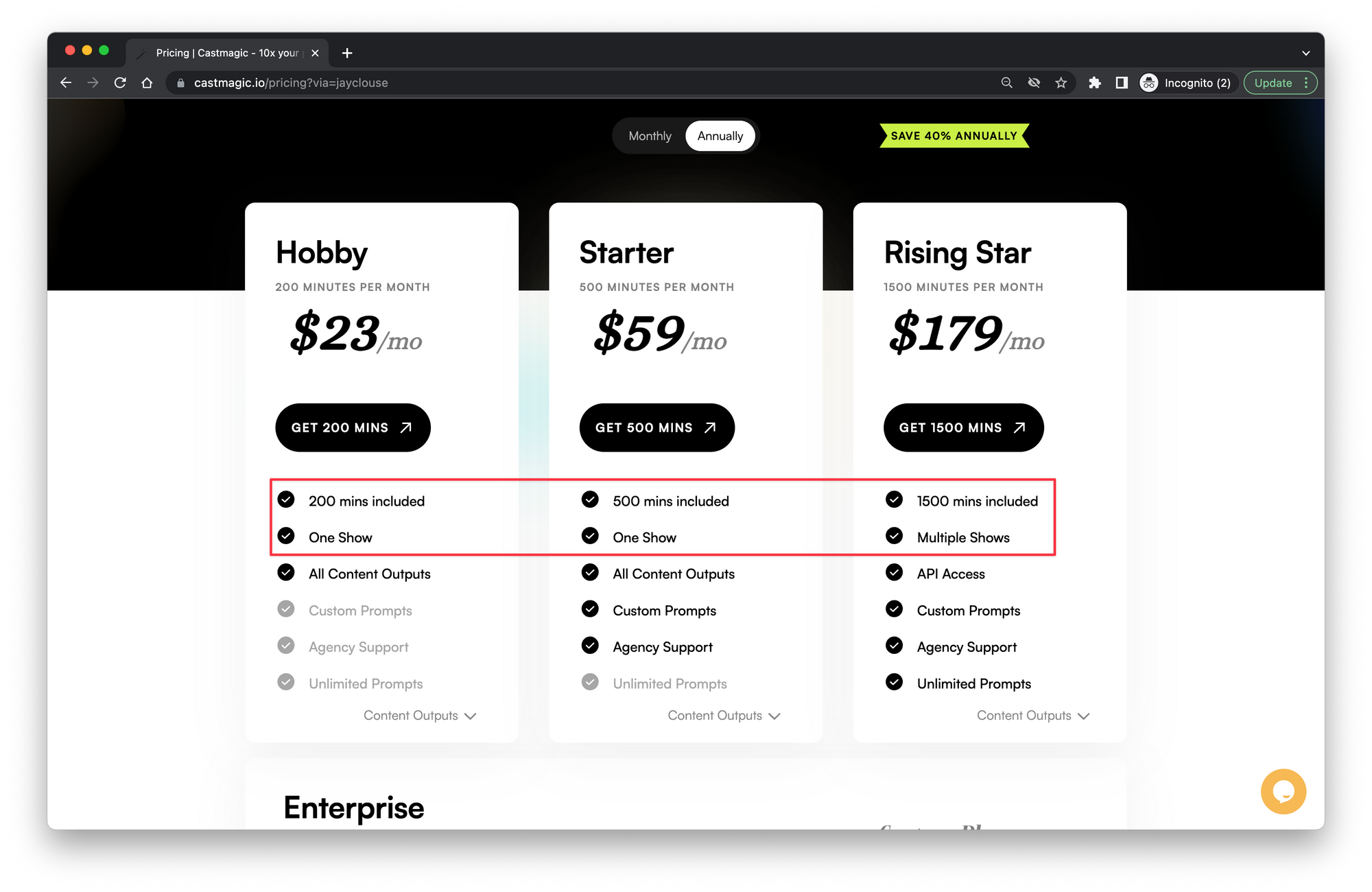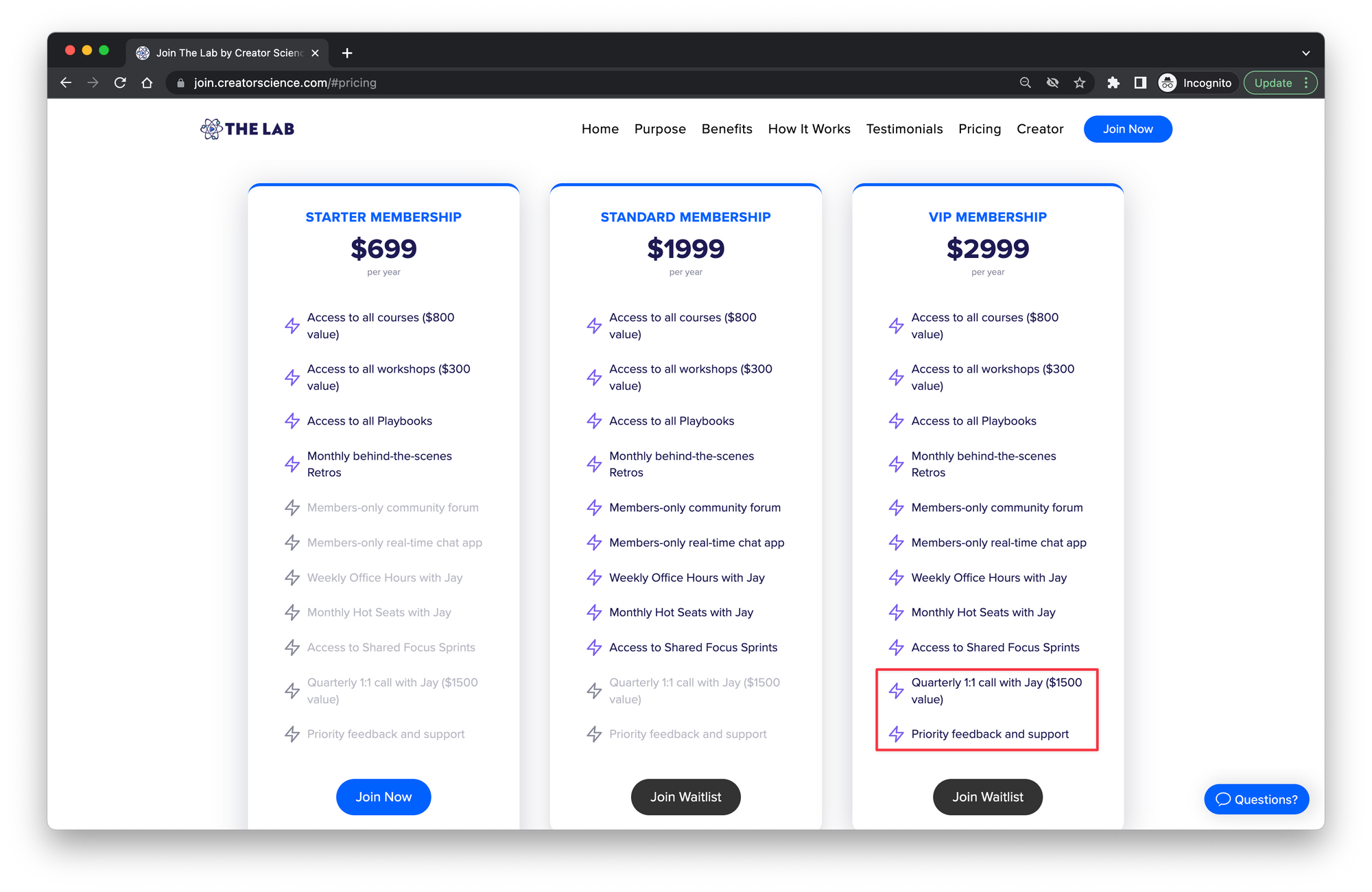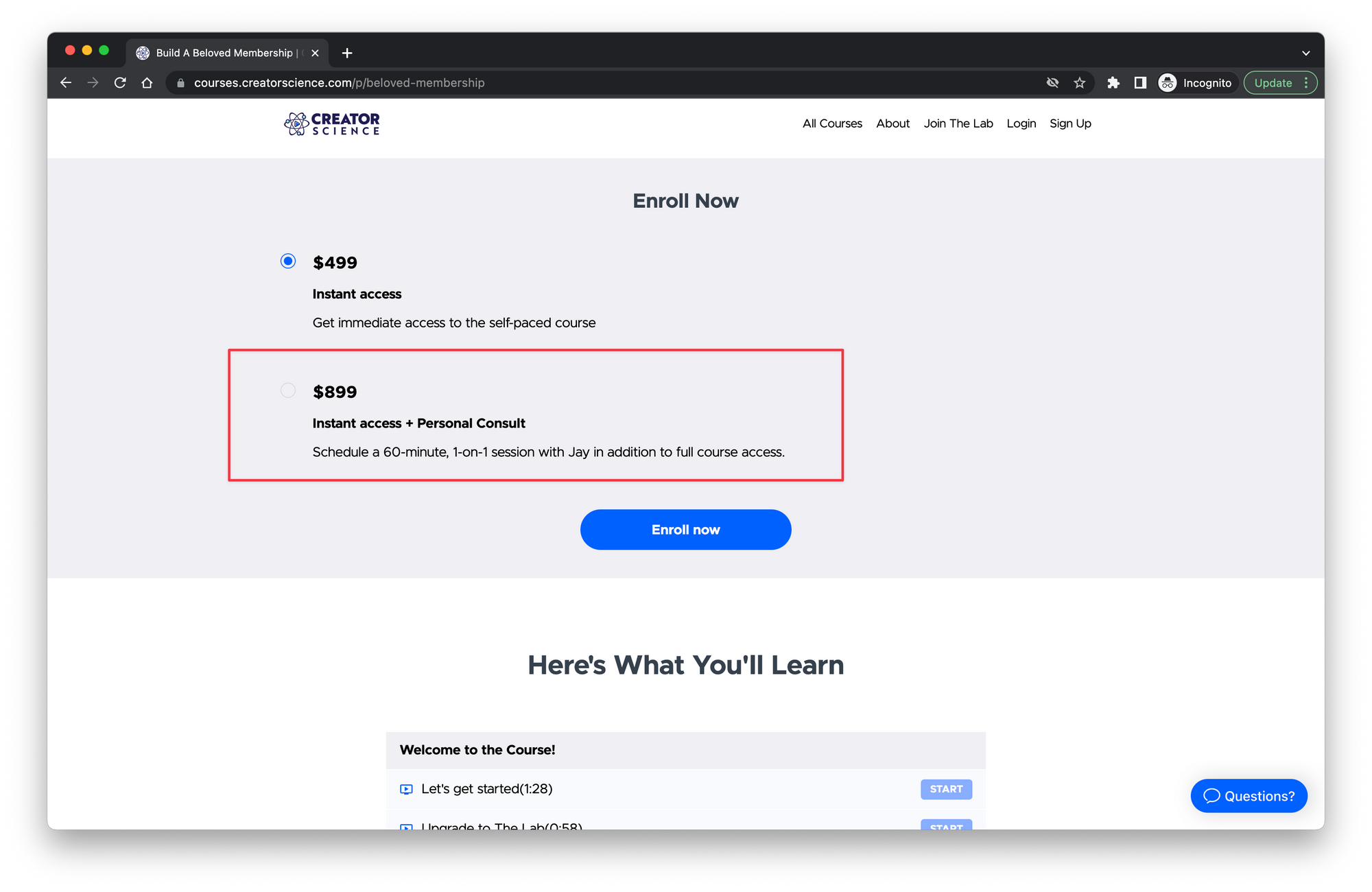It's probably safe to assume that you'd be happy if you were able to increase your revenue. But I find that most creators actually make this more complicated than it needs to be.
When you start selling your first product, it feels like magic – like an entire new world has opened up to you!
After the initial honeymoon, you start to wonder, "How can I make that feeling happen again?"
The first answer that usually comes to mind is to create and launch a new product. Or, as Nathan Barry called it, the "Strip Mall" approach.
But actually, there's a huge opportunity for increasing revenue from your existing products...
The tiered approach
Tiered Pricing models aren't a new thing. You've probably seen it with every software product you've ever purchased:

There are a ton of benefits to tiered pricing:
- More options for accessibility
- Increased average order volume (AOV)
- Price anchoring (the lowest tiers now seem more affordable when compared to the higher tiers)
I even borrowed this approach with The Lab's pricing model:

The risk of pricing tiers
There is one key risk of creating tiered prices – and that is analysis paralysis.
The last thing you want to do is to derail a sale by creating confusion around the best purchase option.
Unfortunately, I see a lot of creators make this mistake.
How to design your tiers
The key to effective pricing tiers is to make the difference between the tiers clear and obvious.
Once again borrowing from software pricing, I love using simple pricing tables to compare the benefits of different tiers at a glance.
Those differences should be clear, obvious, and compelling to different segments of your target market. If the differences between Tier 1 and Tier 2 are unclear, I'll probably choose to NOT choose anything. And if the differences between Tier 1 and Tier 2 are obvious but not compelling, I will never choose Tier 2.
In software, the difference between tiers is often usage-based.
Take for example one of my new favorite tools, Castmagic. The differences between their tiers are largely based on how much you want to use the service:

That may not be as relevant for content creators. For most creators, I think the ideal difference is access-based.
Sara Loretta, a certified Notion badass and a member of The Lab, recently launched a paid newsletter. She has multiple pricing tiers that are differentiated by different levels of feature access:

My favorite approach
Sara's approach above is one of my favorites. But even access differences may mean that you're creating new content on an ongoing basis (which can feel like a perpetual time commitment).
There's an even simpler approach that I think anyone can take with their products right now – and that's creating a coaching tier for your product.
In The Lab, the primary difference between our Standard and VIP memberships is two hours of dedicated 1:1 support with me.

But this can apply to your digital products too – and I think this is the real opportunity.
The knock against a lot of courses is that students don't often finish them. This creates a whole host of issues:
- Poor customer experience
- Fewer testimonials
- Loss of potential for word-of-mouth referrals
So I like to add a coaching tier to each of my digital products. Check it out with Build A Beloved Membership:

I literally tack on the equivalent (or near-equivalent) of my hourly consulting rate.
Adding this coaching tier requires no additional product development and I can deploy it immediately at launch. Even better, there are some clear positive outcomes:
- Great product feedback (which can help improve the material)
- The opportunity to intervene (which can help create better student outcomes)
- Better student experience (which can lead to word-of-mouth referrals)
- More finished courses (which can lead to more testimonials)
In my experience, about 25% of students choose the coaching tier – and virtually everyone tells me on the call that they are glad they did.
Of course, this tier comes with the requirement of YOUR time to deliver that 1:1 experience – and for creators, time is typically your most valuable asset.
If you are worried about the time commitment, there are two options for you:
- Instead of offering 60 minutes of 1:1 support, offer 30 (or 20)
- Price your second tier high enough that fewer people opt for it, but every sale is meaningful
Conclusion
If you're looking to quickly increase product revenue, consider adding a higher tier to your offerings. The simplest way to do that is to simply add a 1:1 coaching tier to any product – courses and membership products in particular are a a great fit.


